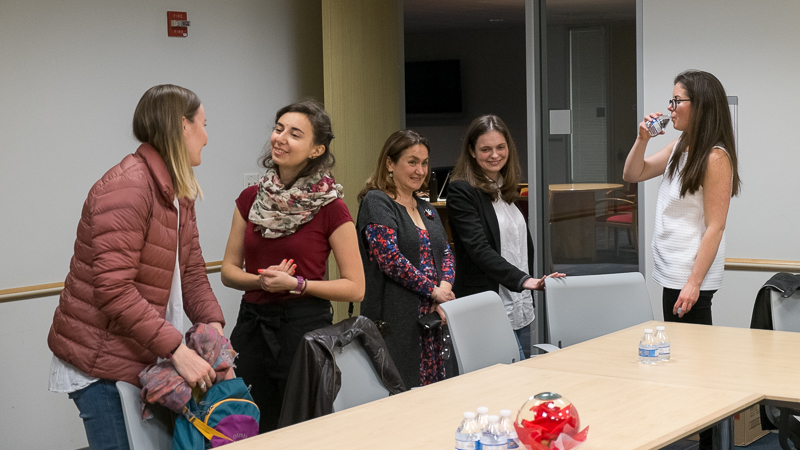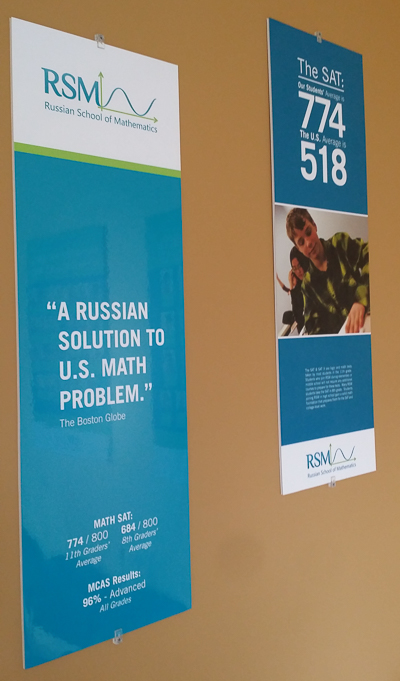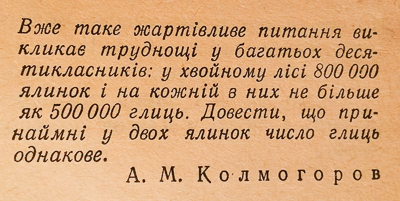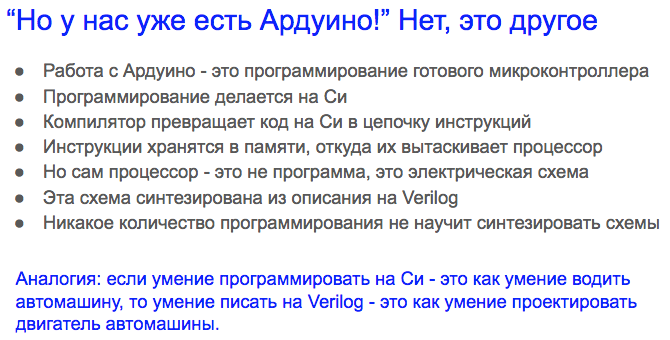Discussed at Stanford what to do with the mathematical and engineering education of schoolchildren in Ukraine

“What can America learn from Ukraine in the field of education?” - this question arose during the meeting in Stanford. It turns out that there is something, for example, the traditions of teaching mathematics, which Ukraine has in common with other CIS countries. “How does the Ukrainian government support schoolchildren's orientation towards engineering professions?” Was another question for the audience, which included employees from SAP, Facebook, MIPS and other well-known technology companies.
But let's start the story in order. On March 8, a round table “Education Reforms in Ukraine: Breakthroughs and Challenges” was held in Stanford. The organizer was the charity organization Nova Ukraine, which supplies computers to Ukrainian libraries. Main participants:
- Co-founder of the Lviv teacher training center Prosvita Yulia Vasilyeva;
- Former Minister of Education of Ukraine Sergey Kvit;
- Svetlana Kostenko, expert on the educational content of the study.com company.
Among those present were specialists from Silicon Valley companies, students from local colleges, representatives of social and cultural organizations of Ukrainian Americans. The organizers mainly talked about improving school administration, as well as expanding teaching in Ukrainian and English. However, both in the subsequent discussion and in conversations after the event, less humanitarian issues arose:
')
- On the continuity of the traditions of teaching mathematics. In Soviet times, Ukrainian mathematicians conducted circles and released many advanced books for physical schools.
- On the continuity of the traditions of teaching engineering disciplines. In Soviet times, enterprises for the production of DEC PDP-11 and Intel 8080 analogs were in Kiev. In general, the first computer in the USSR and the fastest computer in continental Europe in 1950 (MESM) were designed and built in Kiev by the team of S.A. Lebedev from the Kiev Polytechnic Institute.
- On modern experiments in the KPI in the field of teaching the design of digital devices on FPGA to schoolchildren. In this Ukraine has a chance to get ahead of California.
Why math? How does this relate to say programming? From the point of view of most non-technical people, all programmers are the same. But we all know that within the programmer profession there are specializations that require different levels of mathematical thinking. Algorithms for machine learning or for automating the design of microcircuits are usually created by people who trained their brains in mathematics from school. This will be discussed in our post.
So, in order. The round table at Stanford was held on March 8th. The room had a lot of mimosa, tulips, hyacinths and small talk:

Before the round table the musicians sang:
Finally, everyone began to sit down:

Here is the main trinity, from left to right: Svetlana Kostenko (study.com), Yulia Vasilyeva (economist, teacher training center, administration), Sergey Kvit (journalist, philologist, MinObr):

Here is the cheat sheet of Julia and Sergey:
- High school reform begins with higher education reform
- Decentralization and autonomy
- Lack of money
- Who will be the agent of change - the state or civil society?

Sergey Kvit rested on all sorts of humanitarian issues, which is natural, since he is a journalist and a philologist. I will not describe this part, but you can listen to the video on Facebook Nova Ukraine. Next came a speech about what Ukraine can teach America in the field of school education. Then I felt that the humanitarian comrades need help, and this is what I added to their reasoning:
I studied in the 1980s in Kiev, in three schools, including physical school number 145. My three children were born in California and attended local schools, including three public schools, including Homestead High, the school where Steve Jobs studied. Therefore, I can fairly accurately assess the difference in the programs of schools in the USSR and in modern California. Although the programs of American schools are better in chemistry and biology, but in the field of mathematics they are less advanced. In particular, much later and in smaller amounts, proof (statement reasoning) is introduced.
A group of school teachers from the CIS countries (including Ukraine) understood this difference and created a network of additional schools in the USA called the Russian School of Mathematics (RSM). This network now includes 45 schools. RSM is an unequivocal business success, and not only and even not so much among Russians as among other nationalities - Indians, Chinese, Americans. Education in school is in English and children solve problems on the proof of theorems. For example, here’s a piece of homework for 13 year olds:

Such a seemingly simple transfer of Soviet methods of teaching to American soil would have a very concrete effect: here is a quote from the prestigious Johns Hopkins University that among RSM graduates are “the most talented young people in the world”:

The average SAT score among graduates of RSM is 774, and on average in the states it is 518. The Boston Globe newspaper called RSM the “Russian solution to the American education problem.” And now you can imagine - in Wikipedia about RSM there is an article in English only. There are no articles about RSM in Russian, Ukrainian or Belarusian:

In addition to basic school education in the Ukraine of the 1980s, there was a group of mathematicians who organized school circles and published a series of talentedly written books for physical schools. For example:

One of the books, about the Dirichlet principle, began with a comic task “there are 800,000 trees in the forest, each with no more than 500,000 needles. Prove that at least two trees have the same number of needles. ” Then it became attached to other branches of mathematics — irrational numbers, congruence theory, even probability theory, and set theory.
(!)

Here is a binding to irrational numbers, also in an accessible way. “A ditch is made across the road with step A, where A is an irrational number. On the way there is a person with a step of 1 meter. Prove that whatever narrow ditches, a person will eventually fall into one of them ”:

Very good in the 1980s was popular science literature for schoolchildren. Here is an excerpt from A. Konforovich, M. Soroka. By the roads of the University. 1981. About the Scuse number, which is recorded as one with 10 1000000000000000000000000000000000 zeros. What this number means: there is a Chebyshev formula, which gives an approximate number of simple numbers in the range from 1 to N. And up to the Scuse number, the Chebyshev formula gives a larger estimate of the number of primes than the true number, and after the Scuse number it is less:
The text was for schoolchildren of grades 5-7:


It is not surprising that in the 1980s Ukraine developed and manufactured its microprocessors, for example, an analogue of the Intel 8080 at the Kiev factory Kristall. Also in Kiev, at the VUM plant in the 1970s, the SM-4 was produced, an analogue of the DEC PDP 11/34. So I took a picture of the PDP-11 at the Museum of Computer History in Mountain View, California, next to my classmate, girlfriend Irina, with whom I did laboratory work, when I studied chemistry courses at a local college as a hobby:

Serhiy Kvit and other Ukrainian philologists and reformers of education are certainly interested in the development of Ukrainian literature. But Ukrainian literature is not only the love lyrics of Lina Kostenko (“I want nobles, love, sleep, dream that I’m not dreaming anymore? My own secret secretly, my own good name!”), But also the novel of the Ukrainian writer Vadim Sobko "The Key". The protagonist of the novel is a student-mathematician of the Kiev State University, who, in parallel with his studies, works at the Kiev VUM plant. The novel describes how the hero designed and assembled a laptop from microcircuits of a small degree of integration at his home in Borschagovka, as a result of which he found a girl.
I note that microcircuits of a small degree of integration are still the ideal means for teaching schoolchildren the basics of digital logic (AND-OR-HE logic elements, D-triggers, etc.). In particular, last year, we from California helped to conduct a workshop for schoolchildren in Kiev, where they first trained on low-degree integrated circuits of the CMOS 4000 series, originally from the 1970s, and then switched to the 2017 technologies - FPGA / FPGA Xilinx -7:

It will be worthwhile to dwell on the FPGA, because teaching FPGAs to schoolchildren is an area in which Ukraine can be ahead of California. See the result of the Kiev experiment on teaching FPGA to schoolchildren in an article on Geektimes “I took a video interview with the Vice-President Arduino and discussed with her teaching FPGA / FPGA students and the Verilog language” .
An excerpt from the post on Geektimes with the rationale why this kind of additional education can be useful:
In the picture of the world represented by school education, there is a “blind spot” in the area of the principles of digital electronics design, between physics and programming. Robotics and arduino courses do not close this blind spot, since they boil down to programming ready-made chips. Exercises with discrete elements and microcircuits of a small degree of integration, although effective in the introduction to the basic principles, are based on the technologies of the 1960-1970s and do not contain a reference to modern design. The blind spot can be closed by introducing elements of the hardware description language (AEL) and FPGA chips (programmable logic integrated circuits) that are available for school experimentation — matrices of reconfigurable logic elements. Thus, the picture of the world becomes integral, and contributes to the creation of an environment for the emergence of a large number of young engineers who have an idea of all aspects of modern microcircuits for applications such as self-driving cars, and who are able to specialize in the future for designing one or another aspect of such devices.
The introduction of PLD and PLIS into the school curriculum is also well tied to the course of mathematics and physics of physical and mathematics schools - Boolean algebra, arithmetic circuits, finite automata.
Note that JADA and FPGA, despite the superficial similarities with programming, use other basic concepts:
Programming: sequential execution, select branches, cycles, variables, expressions, arrays (with the model of a flat addressable memory), functions (based on the use of the stack), recursion.
Designing digital logic: combinational logic element; construction of combining logic clouds from these elements, including selection primitives using multiplexers, as well as blocks for implementing arithmetic expressions; the concept of a clock signal for synchronizing calculations and repetition; the concept of a D-trigger for storing the current state between clock ticks; state machine; parallelism of operations, the hierarchy of modules, the concept of a pipeline (not only for the processor, but also for arithmetic units).
In addition to the Kiev experiment, there was also a very interesting experiment on teaching FPGAs at the Summer School for Young Programmers in Novosibirsk. Although only advanced students of the 9th grade and older can usually understand the principles related to the FPGA, there were two fifth-graders at the Novosibirsk school who could figure out how to connect blocks designed at the register transfer level and create them simple projects. One of them is undoubtedly a schoolboy with a great future, a combination of early intelligence, accuracy and initiative:
I discussed FPGA at a meeting in Stanford, and they asked me how this differs from Arduino. To this I gave an explanation from the presentation at the round table on the education of schoolchildren at Moscow State University. The round table at Moscow State University was held last October. Here is one of the slides from that presentation:

Yevhen Korotky and his Laboratory Lamp at the Kiev Polytechnic Institute last year won a grant from the Kiev municipality to create a laboratory for teaching children to electronics. They may try to hold an even more extensive seminar this year than they did in the past. We will see if they can demonstrate higher results than those of Novosibirsk. At the Novosibirsk Summer School for Young Programmers there was a 9th grade girl who learned how to modify the synthesized processor core (see the post on Habré "2017 Siberian and Kazakh Microelectronics 2017: Verilog, ASIC and FPGA in Tomsk, Novosibirsk and Astana" ).
In general, schoolchildren in Ukraine are smart, and there are very advanced gymnasiums, for example, the group in the photo below is from the ORT center in Kiev, taken on a hatakone in the Kiev-Mohyla Academy. However, in order to maximize the potential of these students, it is necessary to plan not only measures for better school administration, but also to create an optimal curriculum. For this optimal program it is worthwhile to collect the best finds of American, Asian and European schools, and also to choose a good part of the traditions of the CIS. To figure out how to optimally train future processor developers for artificial intelligence, and geneticists, bioengineers, and economists, and journalists, and authors of love lyrics in the Ukrainian language. This, as the Americans say, is a Challenge. But it is achievable.

Source: https://habr.com/ru/post/350938/
All Articles